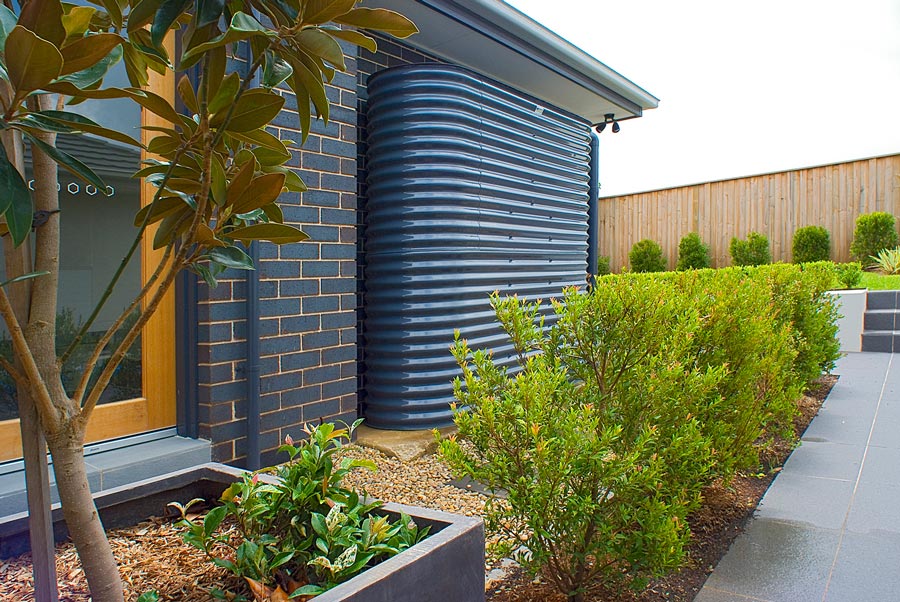
A properly maintained rainwater tank can provide good quality drinking water. Providing the rainwater is clear, has little taste or smell and is from a well maintained water catchment system it is probably safe and unlikely to cause any illness for most users. However, this is not a guarantee of safety as contamination is not always visible.
Water used for household purposes for drinking, food preparation or bathing should meet water quality guidelines in order to protect you and your family’s health. The water should be free of harmful microorganisms or harmful levels of chemicals. By far the greatest potential risk to your health comes from contamination of water with harmful microorganisms such as bacteria and parasites from bird or animal droppings. Rainwater tanks can also be contaminated from roof or plumbing materials.
What tank should I get?
Tanks are available in a wide range of materials including steel (galvanised and Aquaplate), concrete, fibreglass or plastic. All of these materials can be suitable providing the tanks have been manufactured specifically for the collection of rainwater.
It is also important to note that:
- Some PVC pipes may contain lead so if the water is for drinking purposes, only high quality plastic pipe and fittings should be used (‘drinking water’ not ‘stormwater’ grade).
- There have been some reports that water collected from metal roofs can react with steel tanks to cause corrosion.
- Some types of new tanks may have to be washed or flushed before use. The manufacturer should be able to provide advice on whether this may be necessary.
When installed the tank should be covered to prevent light from reaching the water, as it will encourage the growth of algae. Every access point should be sealed unless in use. The inlet and overflow of the tank should incorporate a mesh cover and a strainer to keep out materials such as leaves and to prevent the access of mosquitoes and other insects. The top of the tank should have a tightly sealed access cover, to stop animals and children entering but to allow access to the tank for cleaning and inspection purposes. Any ground level covers should also be sealed to prevent stormwater entering in-ground tanks.
The provision of good quality water depends on correct design and installation followed by sensible maintenance of the rainwater tank and catchment area. The collection of rainwater involves “low maintenance not no maintenance”. For more information on Tank Water, visit the NSW Health.
If your tank water needs testing, contact us today.
